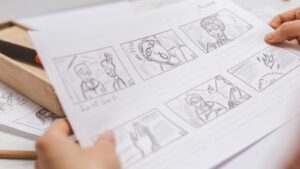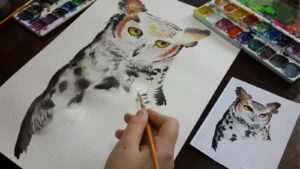Animation art drawings have captivated audiences for decades, blending creativity and technical skill to bring stories to life. From the hand-drawn frames of classic Disney films to the digital masterpieces of today’s blockbusters, these drawings are the foundation of the animation industry.
Animation Art Drawings
Animation art drawings employ a variety of techniques and tools to create captivating visuals. These methods include traditional hand-drawn animation, digital animation tools, and hybrid techniques.
Traditional Hand-Drawn Animation
Traditional hand-drawn animation involves drawing each frame by hand. Artists draw thousands of individual images on paper or transparent cels. This technique was utilized in classics like Disney’s “Snow White and the Seven Dwarfs.” These drawings are then photographed in sequence to create the illusion of movement. Tools include pencils, ink pens, and light tables, which help animators see through layers of paper.
Digital Animation Tools
Digital animation tools offer versatile options for modern animators. Software like Adobe Animate, Toon Boom Harmony, and TVPaint Animation allow artists to draw directly onto tablets. These programs provide layers, onion skinning, and color palettes. Additionally, 3D software such as Blender, Autodesk Maya, and Cinema 4D enable the creation of complex models and scenes.
Hybrid Techniques
Hybrid techniques blend traditional and digital methods. Animators might sketch initial designs on paper, then scan and refine them using digital tools. This approach combines the tactile quality of hand-drawn art with the precision of digital editing. Movies like “The Princess and the Frog” utilized hybrid techniques, merging the charm of classic animations with the efficiency of modern software. This fusion allows for greater creativity and flexibility in the animation process.
Enhancing animation art drawings requires understanding these techniques and tools. Combining them effectively brings animated stories to life, enriching the viewing experience.
Key Elements Of Animation Art
Animation art drawings combines several key elements to create compelling visuals. Mastery of these elements enhances the overall quality and appeal of animated works.
Line Work
Line work forms the backbone of animation art, defining shapes and contours. Precision in line quality distinguishes professional animations. Clean, consistent lines contribute to the clarity and readability of characters and scenes. Rough sketches often evolve into polished line art during the animation process, ensuring a seamless transition between frames.
Color And Shading
Color and shading add dimension and depth to animation art. Proper use of color theory conveys mood and atmosphere, while shading techniques define light and shadow. Animators employ gradients, highlights, and shadows to produce realistic textures. For example, Disney’s “The Lion King” uses warm hues to depict the African savanna.
Motion And Emotion
Motion and emotion are crucial for bringing animated characters to life. Fluid movement, achieved through techniques like keyframing and tweening, ensures lifelike animations. Expressive gestures and facial expressions communicate characters’ feelings and thoughts. In Pixar’s “Inside Out,” subtle changes in characters’ expressions vividly portray complex emotions.
Evaluating Quality Of Animation Art Drawings
Evaluating animation art drawings involves analyzing various factors that contribute to the overall effectiveness and appeal of the animation.
Criteria For Assessment
-
Line Quality: Assess clean, consistent lines that define forms clearly without unnecessary breaks or wobbles. Strong linework contributes to the clarity and readability of the drawing.

-
Color and Shading: Examine how well the use of color and shading creates depth and conveys mood. Proper use of color theory ensures the art draws viewers in and enhances the story’s emotional impact.
-
Composition and Layout: Evaluate the arrangement of elements within a frame to guide the viewer’s eye effectively. Balanced composition helps to focus attention on key aspects and enhances visual storytelling.
-
Character Design: Analyze the uniqueness and appeal of character designs. Well-designed characters should immediately communicate their personality and role within the story.
-
Movement and Fluidity: Check the smoothness and naturalness of character movements. Techniques like keyframing and tweening should be used to create lifelike and expressive motions.
Art Drawings
Animation art drawings remain a vital component of the animation industry. From the early days of hand-drawn classics to today’s digital masterpieces, the core principles of animation have endured. Aspiring and experienced animators alike benefit from understanding the rich history and diverse techniques involved.


